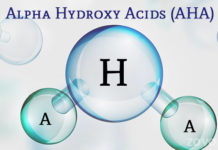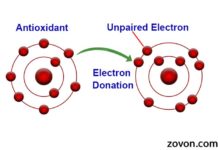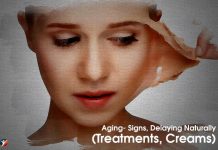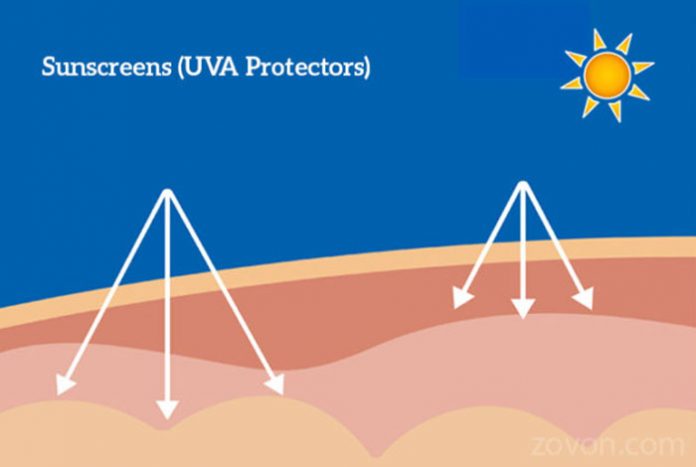
Sunscreens are also known as sunblocks or suntans. These are available in the form of lotion, creams and spray gels and help in protecting our skin from UVA and UVB rays which are harmful to skin. Sensitive skin is more prone to damage from UV sun rays (ultraviolet rays). For the protection of our skin, application of sunscreen must be positively incorporated into our daily skin care regimen.
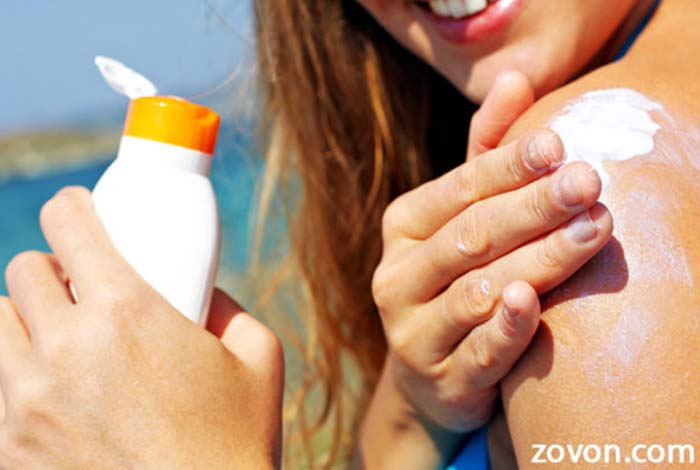
First of all, let’s know about UVA and UVB:
Sunlight is a mixture of different waves having different wavelengths namely X-rays, ultraviolet rays, visible rays, infrared rays and radio waves. Out of all these waves, UV-rays or ultraviolet rays are very important as they have a direct effect on our bodies especially the skin. UV-rays are three types, UV-A, UV-B and UV-C. Out of these only certain quantities of UV-A and UV-B reach us while UV-C gets wholly absorbed by our atmosphere. Ultraviolet A is a long while Ultraviolet B is a shortwave.
UV-A penetrates deep into the dermis (thickest layer of the skin). Exposure of Unprotected skin to UV-A can lead to premature aging and wrinkled skin. On the other hand, UV-B which is a shortwave reaches only to the superficial layers of our skin. It can lead to skin cancer. The intensity of UV radiations varies by season, location and time. The peak hours when UVB is supposed to hit us badly are 10 am to 4 pm. It can lead to a permanent damage to the skin.
SPF – Sun Protection Factor
SPF or the sun protection factor is a very important aspect of a sunscreen. It gives us an idea of how much of radiation that particular product is allowing to reach our skin. If a product has SPF 30 it means that this product only allows 1/30th part of radiation to reach us. So SPF measures the level of UVB protection that how much sunscreen should be applied to the skin to protect it from sun damage.
Levels Of SPF:
There are four levels of SPF:
- Low (4,6,8,10)
- Medium (15,20,25)
- High (30,40,50)
- Very High (50+)
- SPF 15 will approximately protect from 93% of the UVB rays.
- SPF 30 will approximately protect from 97% of the UVB rays.
- SPF 50 will approximately protect from 98% of the UVB rays.
The degree of protection provided by a sunscreen also depends on a number of factors such as:
- The amount of sunscreen applied
- Weather conditions
- Sweating level
- Swimming duration
- Skin type
Ingredients Used in Sunscreen:
Sunscreen includes a combination of below mentioned active ingredients:
- Oxybenzone
- Avobenzone
- Octisalate
- Octocrylene
- Homosalate
- Octinoxate
Types of sunscreen
Sunscreens are broadly divided into two types depending on their mode of action. One group of sunscreen works by absorbing the UV rays and preventing them from reaching our skin while another group works by reflecting these rays and thus preventing them from entering the skin.
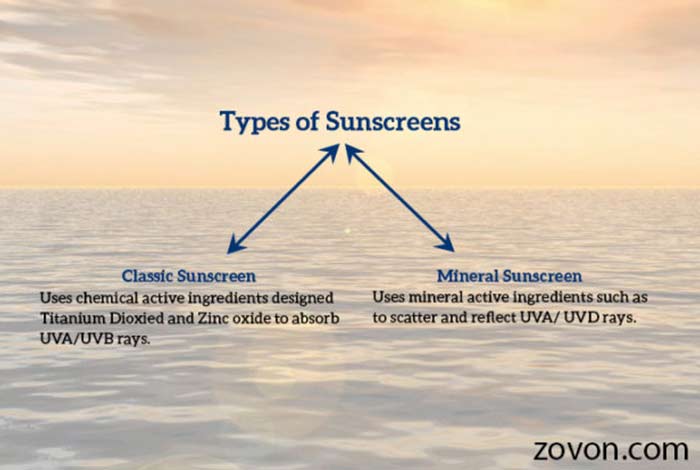
Benefits Of Sunscreens:
- Works as a guard of skin from harmful UV rays
- Prevents premature aging
- Lowers skin cancer risk
- Protects from patchy skin
- Prevents sunburns
- Prevents tanning
- Prevents discoloration of skin
- Enhances healthy skin
Why is sunscreen so important?
Prevention Of Skin Cancer
Sunscreen use can help protect from skin cancer. There are three types of skin cancer – melanoma, basal cell skin cancer and squamous cell carcinoma.
- Melanoma
It occurs in the skin but it may rarely occur in mouth, intestine and eyes. In women, it occurs in legs. On the other hand, in man, it occurs commonly on the back. In the early stage, it is like a mole but later on, it will lead to increase in size, discoloration, itching and skin collapse. It is the most dangerous type of skin cancer.
- Basal-cell skin cancer
It is the most common skin cancer. It is not that painful on the skin. It looks like a kind of an ulcer. It grows gradually and can damage the tissues but not that risky to lead to death.
-
Squamous-cell skin cancer
It is one of the main types of cancer. It is like a hard lump with dry skin cover on it. Other signs are scars, lighter skin and immune system malfunctioning. It can spread from area to area.
Do’s for using sunscreen
- If your skin starts burning after 10 minutes after getting exposed to the sun, apply SPF 15 and it would allow you to stay in sun for 150 minutes approximately. It also depends on the skin type, sunlight intensity and amount of sunscreen used.
- Experts recommend that one should apply SPF 15 to the full body coverage and should reapply after every 2 hours when in the sun exposure.
- Remember to wear full sleeves shirts, hats and pants in the exposure of the sun. Sunscreen lotion is not enough for protection depending on the skin type.
- Eyes can also get sunburned. Try to wear sunglasses in getting exposed to the sun.
- Lips can be sunburned. Use lip balm which contains sunscreen. It is easily available in the market.
Sunscreen will not give instant protection. One should apply it before 20 minutes going outside.
Don’ts for using sunscreen
- It is a myth of purchasing high-level SPF sunscreen. Sunscreen should be purchased according to the skin type. High-level SPF creams only make you feel overconfident and less likely to reapply.
- Try not to purchase spray sunscreens. These do not spread all over easily and one can be left with no application on other areas of the body. It also can catch toxic ingredients.
- Only face is not important. One should apply sunscreen to the whole body including ears, lips as well.
- Do not make a perception that sunscreens are waterproof. It needs reapplication after every 2 hours or excessive water will wash it off.
Application of sunscreen on a daily basis can prevent the wrinkles and dry skin. Those who are regularly using sunscreen do have smoother skin than other people.
(It is highly recommended to apply sunscreen after every 2 hours for better protection)
Side effects of sunscreens
Everything has its own advantages and side effects as well and sunscreen is not the exception. Despite having so many desired effects on the skin, it also has some side effects take place while applying topically and that obviously don’t suit the skin. A few are described below:
- Acne
- Swelling of the skin or sometimes red spots appear
- Itching, stinging or maybe burning of the skin
- Feeling pain in hairy areas
- Pus in the hair follicles
Although very severe allergic reaction to this sunscreen is not seen usually, but still in case, if you find any such symptoms, you are supposed to immediately seek a medical consultation.

